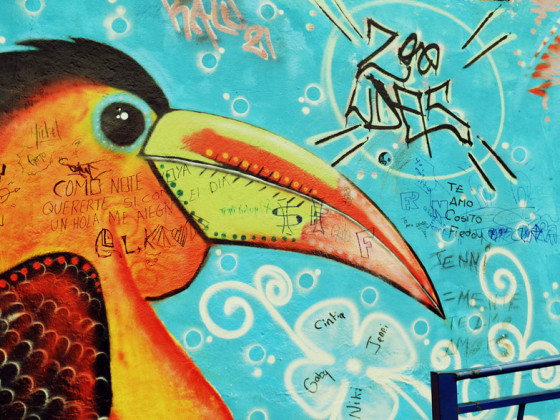In Ecuador, the urban art movement is absolutely massive. Check out some examples — absolutely exploding with color and layers of meaning — in the 17 images below.
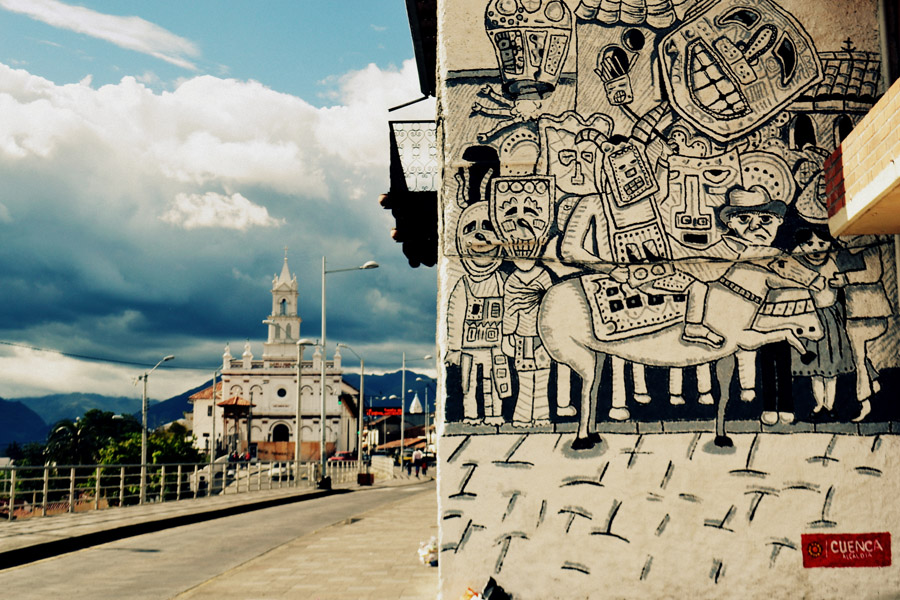
People who climb the 439 steps to reach Viewpoint Turi are rewarded by panoramic views of a city crossed by four rivers, houses with red gabled roofs, and tons of green space. You can play with binoculars and look for specific places — baroque balconies and churches that stand out because of their Gothic and Renaissance domes. In the distance, rays of sunlight sneak between the clouds and the mountains of El Cajas National Park.
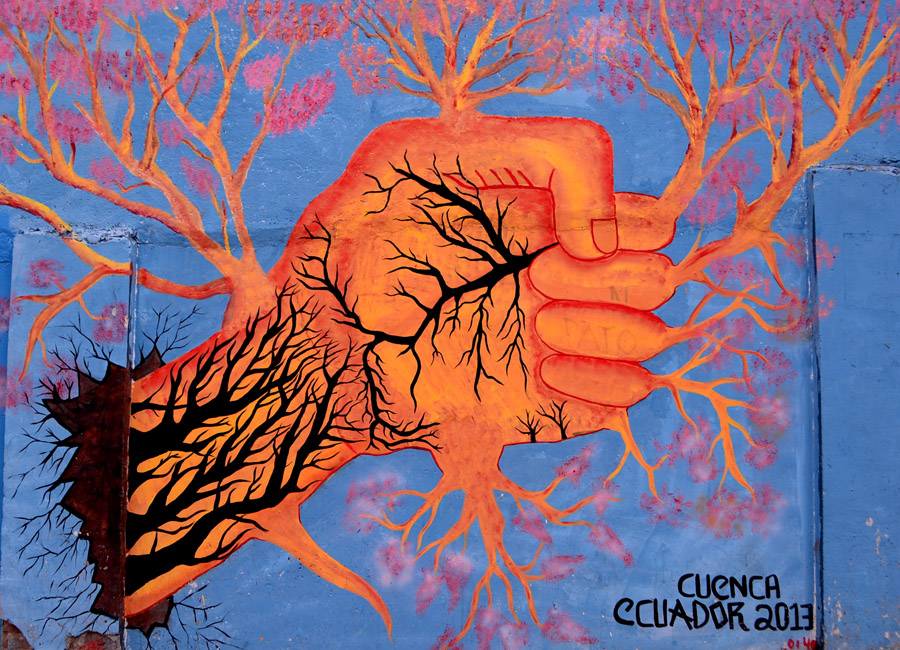
A few blocks from the historical center — a World Heritage Site since 1999 — you'll start to see the city's murals. Every 100 meters, the walls become a canvas and the city turns into an open museum.
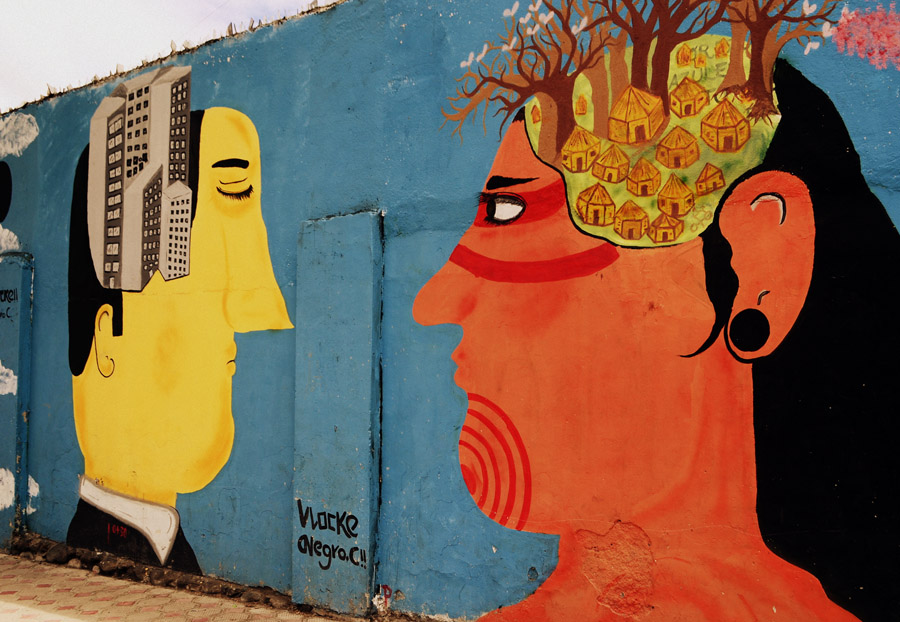
From portraits of elderly people with leathery skin to graffiti that cries out, "I prefer the fat woman’s sandwiches; McDonalds, go away!" all kinds of themes and techniques co-exist. There are also political messages scrawled across the walls, like "Say no to Monsanto," "Unclog the memory," and "What are we teaching to our children?"
Intermission
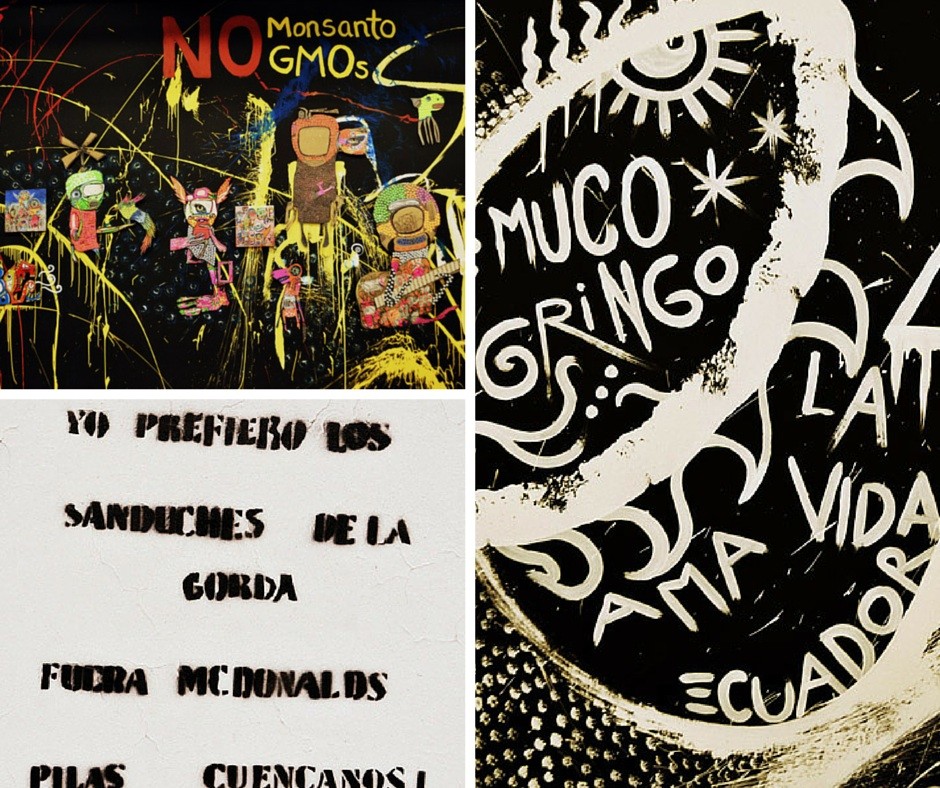
Paul Desmond’s sprays box is also his support chair to reach the top of the wall. While he outlines his design, tourists watch from afar. Paul is one of the artists participating in a collective intervention to decorate the walls of Hermano Miguel La Salle School. Desmond says, “I started making tags when I was 17 years old. From that moment on, my life changed. If I hadn't started to make graffiti, I don’t think I would have studied at university at all.” Today he is a designer, and when he speaks, you can feel his passion and desire to share his art. He continues, “When you are painting on the walls, you feel that your art is not only for you, but for everyone to enjoy. Everyone, no matter the social class, can see it.”
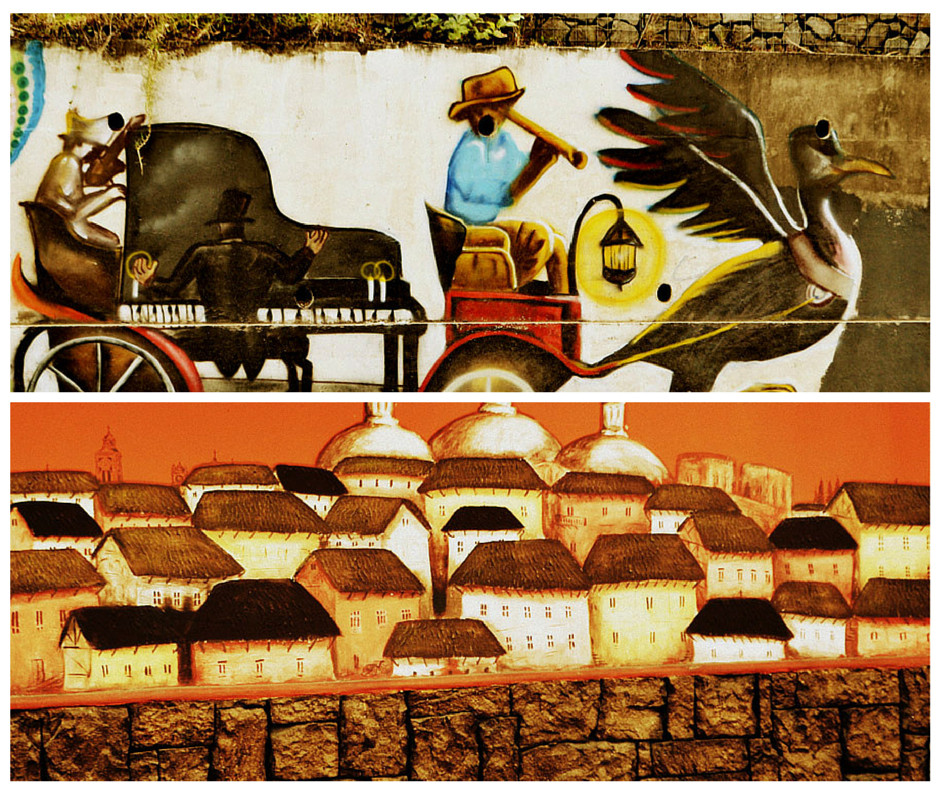
Street art was traditionally painted undercover, at night. Even today, it is seen as vandalism in most European cities. However, in other places like Valparaiso, Bogotá, Montevideo, and Buenos Aires, street art is becoming increasingly acceptable. In Ecuador, the urban art movement is huge, but it takes on different characteristics in different cities. Cuenca is particularly special — it's the only city in the country with a municipal ordinance that regulates street art.

The municipal ordinance emphasises providing job opportunities to young artists instead of punishing them. Paul Desmond says that the cuencanos (people from Cuenca) usually look kindly on murals. They come, talk to the artists, take pictures, and then they might even give permission to the street artists to paint the facades of their own homes. For some people, street art has become a great job opportunity.
“I have friends who studied art at university, and they're much better off painting outdoors than selling their works to museums and galleries”, says Desmond.
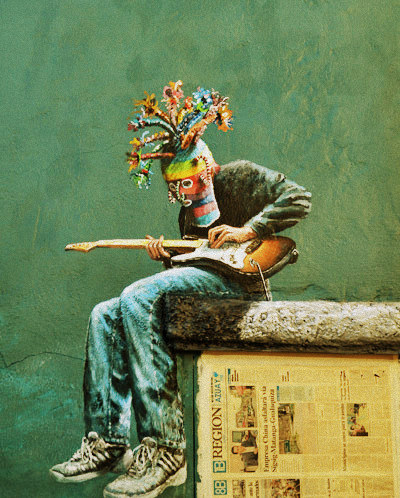
Many artists painting in Cuenca today are art students, designers, and even university professors. According to the interviewees, graffiti painters who make tags are generally teenagers, while those who paint artistic murals are grown-ups and professionals. This is not a coincidence: the University of Cuenca — the third oldest in Ecuador — is one of the best places to study in the country and it offers many art degrees.
Intermission
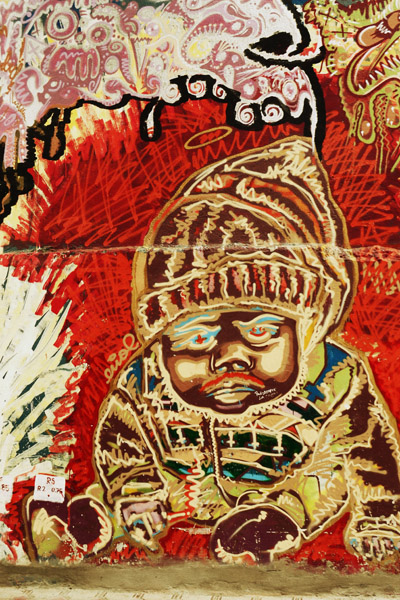
In Cuenca, little by little, empty spaces on cement walls get filled with colors.
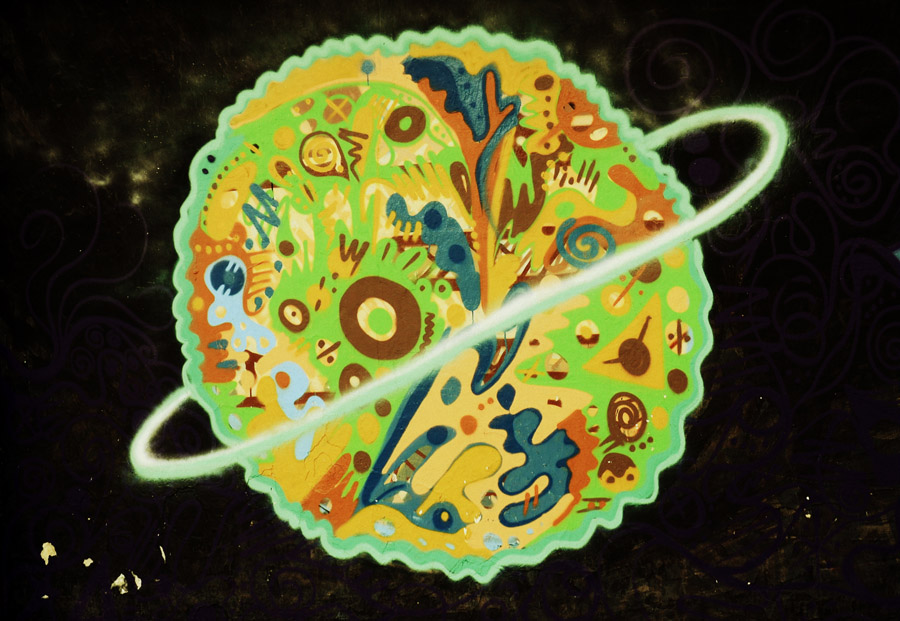
The artists are not only creating works of art; they're using empty spaces as a platform for freedom of expression.
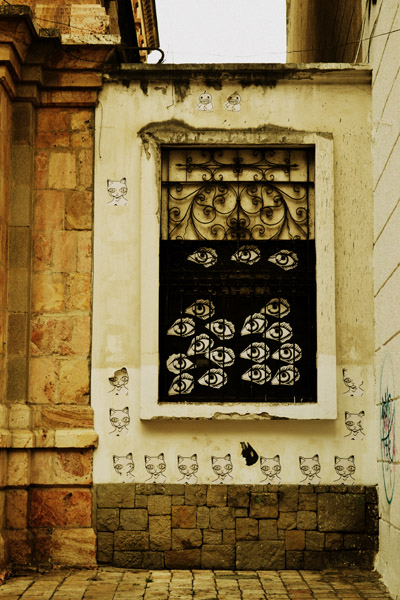
The streets are filled with interesting details.
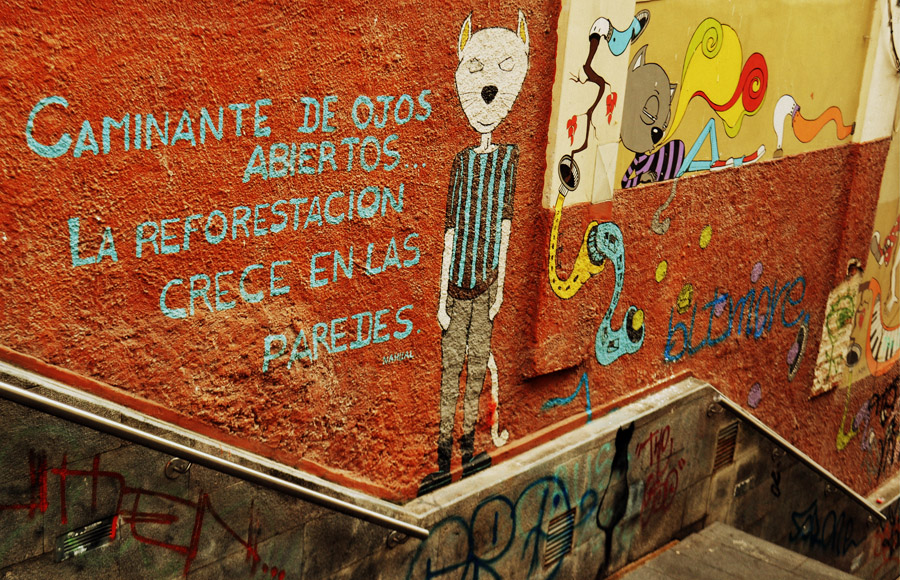
This mural says, “Passerby with eyes wide-open: the reforestation starts in the walls.”
Intermission
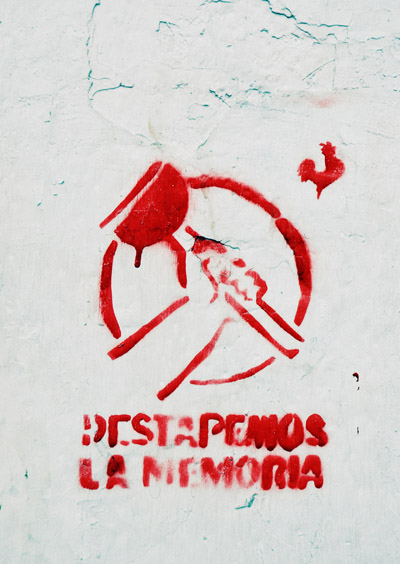
This one says, “Unclog the memory.”
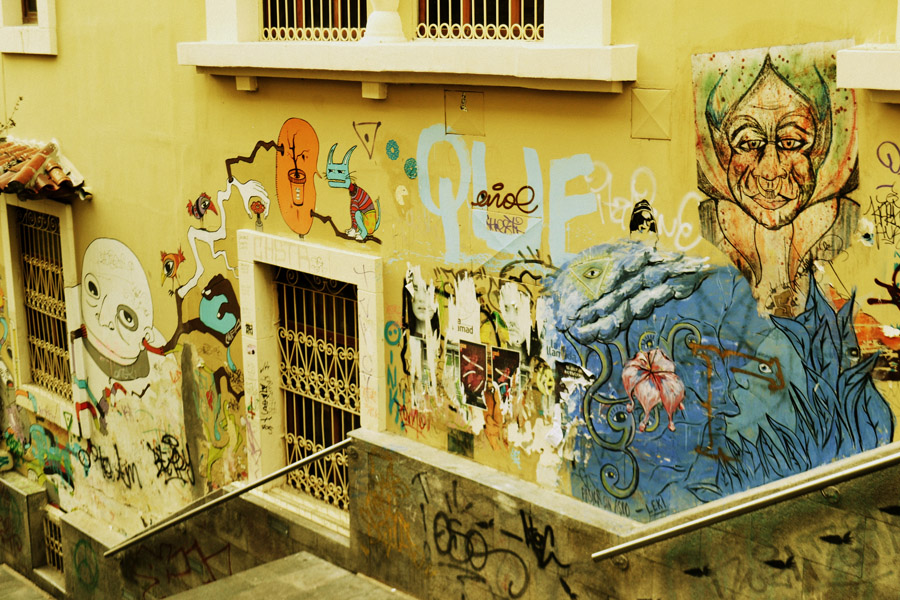
To see this art, you don't need to spend a single penny. You just need to walk down the streets and discover what the walls have to say.
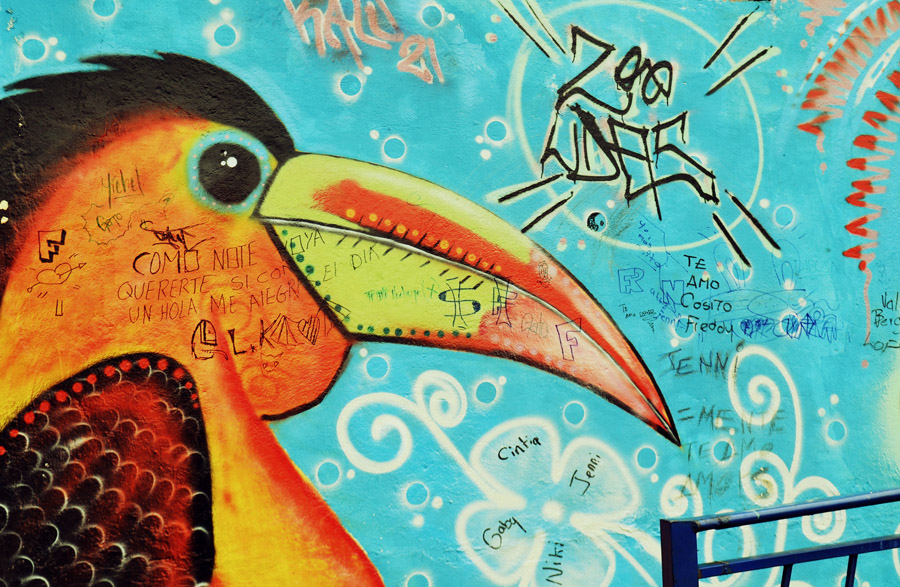
Every piece tells a story.
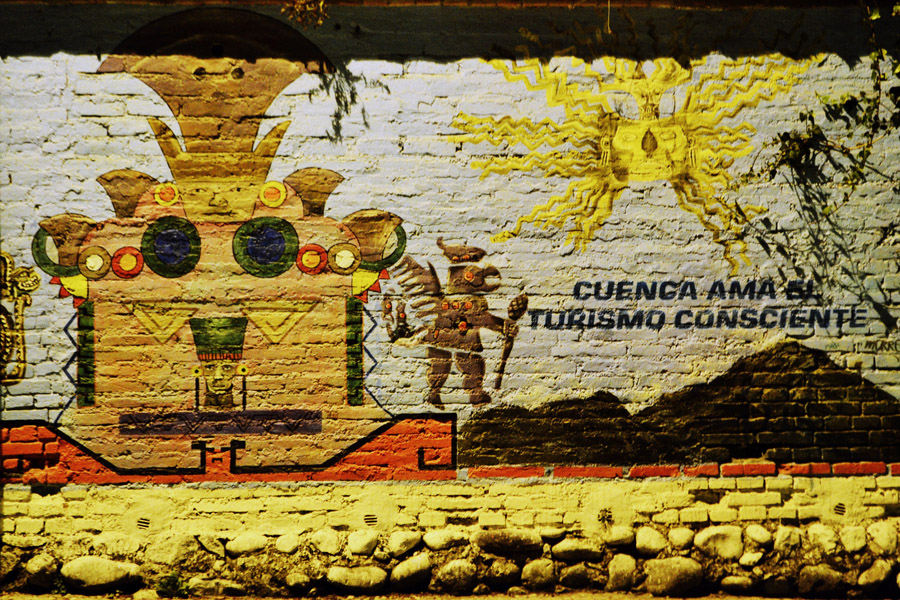
This piece says, "Cuenca loves conscious tourism."

Political, social, and aesthetic messages are splashed across the city walls.

Often, these expressions represent the local culture and act as a thermometer of what it is currently happening in the city.
